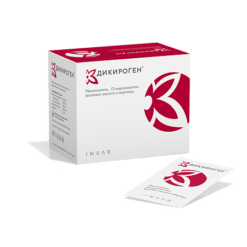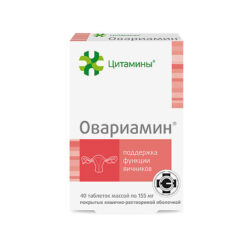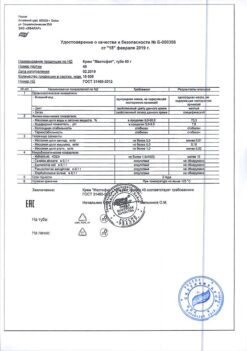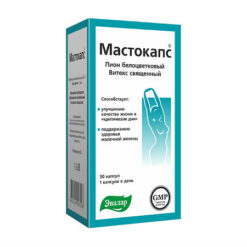No products in the cart.
Linparza, 150 mg 56 pcs.
€1.00
Out of stock
(E-mail when Stock is available)
Description
Pharmacotherapeutic group:
antitumor drug
ATX code:
L01XX46
Pharmacological properties
Pharmacodynamics
Pharmacodynamic properties
Olaparib is a potent inhibitor of human poly(ADP-ribose)-polymerase (PARP) PARP-1, PARP-2 and PARP-3 enzymes. Olaparib in monotherapy and in combination with conventional chemotherapeutic drugs has been shown to inhibit the growth of certain tumor cell lines in vitro and tumor growth in vivo.
PARP enzymes are required for efficient repair of single-strand breaks of deoxyribonucleic acid (DNA). PARP-induced repair requires that, after chromatin modification, PARP must self-modify and detach from the DNA to open access for basic excision repair enzymes to the site of the break.
When olaparib binds to the active site of the DNA-bound PARP enzyme, it prevents PARP from detaching and fixes it to DNA, thereby blocking repair. In dividing cells, this causes the replication fork to stop at the location of the PARP-DNA complex and leads to double-stranded DNA breaks.
In normal cells, double-stranded DNA breaks are repaired by homologous recombination. In tumor cells lacking functional components of repair by homologous recombination, such as BRCA1 or BRCA2, double-stranded DNA breaks cannot be accurately and efficiently repaired by homologous recombination.
Instead, repair is carried out by alternative pathways, such as nonhomologous end joining, associated with introducing a large number of errors into the DNA, which increases genomic instability.
After several replication cycles, genomic instability can reach unacceptable levels and lead to the death of tumor cells, which initially carry a high mutational burden compared to normal cells.
In the absence of mutations in the BRCA1 or BRCA2 genes, DNA repair through homologous recombination can be disrupted by other mechanisms, although the resulting abnormalities and their manifestations are not fully known.
The lack of a fully functional repair pathway through homologous recombination is one of the key factors determining the sensitivity of ovarian and other types of cancer cells to platinum drugs.
In in vivo models with BRCA deficiency, olaparib administered after platinum drug therapy resulted in delayed tumor progression and increased overall survival compared with platinum drug therapy alone, which correlated with the duration of olaparib maintenance therapy.
Effect on the QT interval
Multiple administration of olaparib at a dose of 300 mg twice daily had no clinically significant effect on myocardial repolarization (based on no effect on the QT interval).
Pharmacokinetics
The pharmacokinetics of olaparib in tablets at the 300 mg dose is characterized by an apparent plasma clearance of approximately 7 L/hour, an apparent distribution volume of approximately 158 L and a half-life of 15 hours. AUC (area under the concentration-time curve) of 1.8 was observed with repeated administration, and pharmacokinetics appeared to be slightly time-dependent.
Absorption
Olaparib is rapidly absorbed after oral administration in tablet form (2 150 mg tablets) with a median time to reach maximum plasma concentration (Cmax) of 1.5 hours.
Simultaneous intake of the drug with food slowed down absorption rate (time to reach maximum concentration (tmax) increased by 2.5 hours, and maximum concentration (Cmax) decreased by approximately 21%), but did not significantly affect absorption rate of olaparib (therapeutic range AUC: 1.08; 90% confidence interval (CI) 1.01; 1.16). Therefore, Linparza® can be taken independently of meals (see section “Dosage and administration”).
Distribution
Under in vitro conditions the binding of olaparib to plasma proteins is approximately 82% at its plasma concentration of 10 µg/ml, which approximately corresponds to Cmax. In vitro, the degree of binding of olaparib to human plasma proteins was dose-dependent; the bound fraction was approximately 91% at 1 µg/ml, decreasing to 82% at 10 µg/ml and 70% at 40 µg/ml.
In purified protein solutions, the albumin-bound fraction of olaparib was approximately 56% and was independent of the olaparib concentration. Using the same test system, the fraction bound to alpha-1-acid glycoprotein was 29% at an olaparib concentration of 10 μg/ml, with a trend toward less binding at higher concentrations.
Metabolism
In vitro it has been shown that the main enzymes involved in the metabolism of olaparib are cytochrome P450 CYP3A4/5 isoenzymes.
After oral administration of 14C-olaparib by female patients, most of the radioactivity in plasma was due to unchanged olaparib (70%); it was also the major component detected in urine and feces (15% and 6% of the dose taken, respectively).
Olaparib undergoes a large number of metabolic transformations in the body, which most commonly involve the piperazine and fluorobenzyl rings, mainly by oxidation to form a number of derivatives, which subsequently undergo glucuronide or sulfate conjugation.
Up to 20, 37, and 20 metabolites were detected in plasma, urine, and feces, respectively, most of which were less than 1% of the drug ingested.
The major circulating metabolites in the blood were an open-ring piperazine-3-ol fragment and two monooxygenated metabolites (each constituting approximately 10% radioactivity), with one of the monooxygenated metabolites also being the major metabolite detected in the urine and feces (6% and 5% radioactivity, respectively).
In vitro, olaparib minimally inhibited or did not inhibit UGT2B7 or the cytochrome CYP1A2, 2A6, 2B6, 2C8, 2C9, 2C19, 2D6, 2E1 isoenzymes, and is not expected to be a clinically relevant, time-dependent inhibitor of any of the listed cytochrome P450 isoenzymes.
Olaparib inhibited UGT1A1 in vitro, but physiologically valid pharmacokinetic modeling indicates that this phenomenon is not clinically significant.
According to the results of enzyme activity assessment, olaparib was not an inducer of CYP2C9 or CYP2C19 isoenzymes. In vitro olaparib is a substrate and inhibitor of the efflux transporter, glycoprotein P (IC50 = 76μM), but this fact is probably not clinically relevant.
The results of in vitro studies also showed that olaparib is not a substrate of OATP1B1, OATP1BZ, OCT1, BCRP or MRP2, is a weak inhibitor of BCRP and is not an inhibitor of OATP1BZ, OAT1 or MRP2.
Excretion
After a single administration of 14;C-olaparib, approximately 86% of the total radioactivity was excreted within 7 days, approximately 44% by the kidneys and 42% through the intestine. Most of the administered dose was excreted as metabolites.
Pharmacokinetics in special patient groups
In population pharmacokinetic analyses, age, sex, body weight, or race (including patients of Caucasian race and patients of Japanese origin) had no significant effect on the pharmacokinetics of olaparib.
Renal dysfunction
In patients with mild renal dysfunction (creatinine clearance of 51 to 80 ml/min) after a single oral administration of 300 mg olaparib the AUC was increased by 24% and Cmax by 15% compared to patients with normal renal function. In patients with mild renal dysfunction a dose adjustment of Linparase® preparation is not required.
In patients with moderate renal dysfunction (creatinine clearance from 31 to 50 ml/min) AUC was increased by 44% and Cmax by 26% if compared to patients with normal renal function after a single use of oral 300 mg olaparib.
In patients with moderate renal dysfunction it is recommended to adjust the dose of Linparase® (see section “Dosage and administration”).
Use of olaparib in patients with severe renal dysfunction or terminal renal failure (creatinine clearance ≤30 ml/min) has not been studied.
Hepatic impairment
In patients with mild hepatic impairment (grade A on the Child-Pugh scale) AUC was increased by 15% and Cmax by 13%; In patients with liver dysfunction of moderate severity (Child-Pugh class B) AUC was increased by 8% and Cmax was decreased by 13% compared to patients with normal liver function.
In patients with liver dysfunction of mild to moderate severity, no dose adjustment of Linparza® is required (see section “Dosage and administration”). The use of olaparib in patients with severe hepatic impairment (Child-Pugh class C) has not been studied.
Additional information
| Conditions of storage | At a temperature not higher than 30 ° C. Keep out of reach of children. |
|---|---|
| Manufacturer | AbbVie Limited, Puerto Rico |
| Medication form | pills |
| Brand | AbbVie Limited |
Related products
Buy Linparza, 150 mg 56 pcs. with delivery to USA, UK, Europe and over 120 other countries.













